#muisca
Text

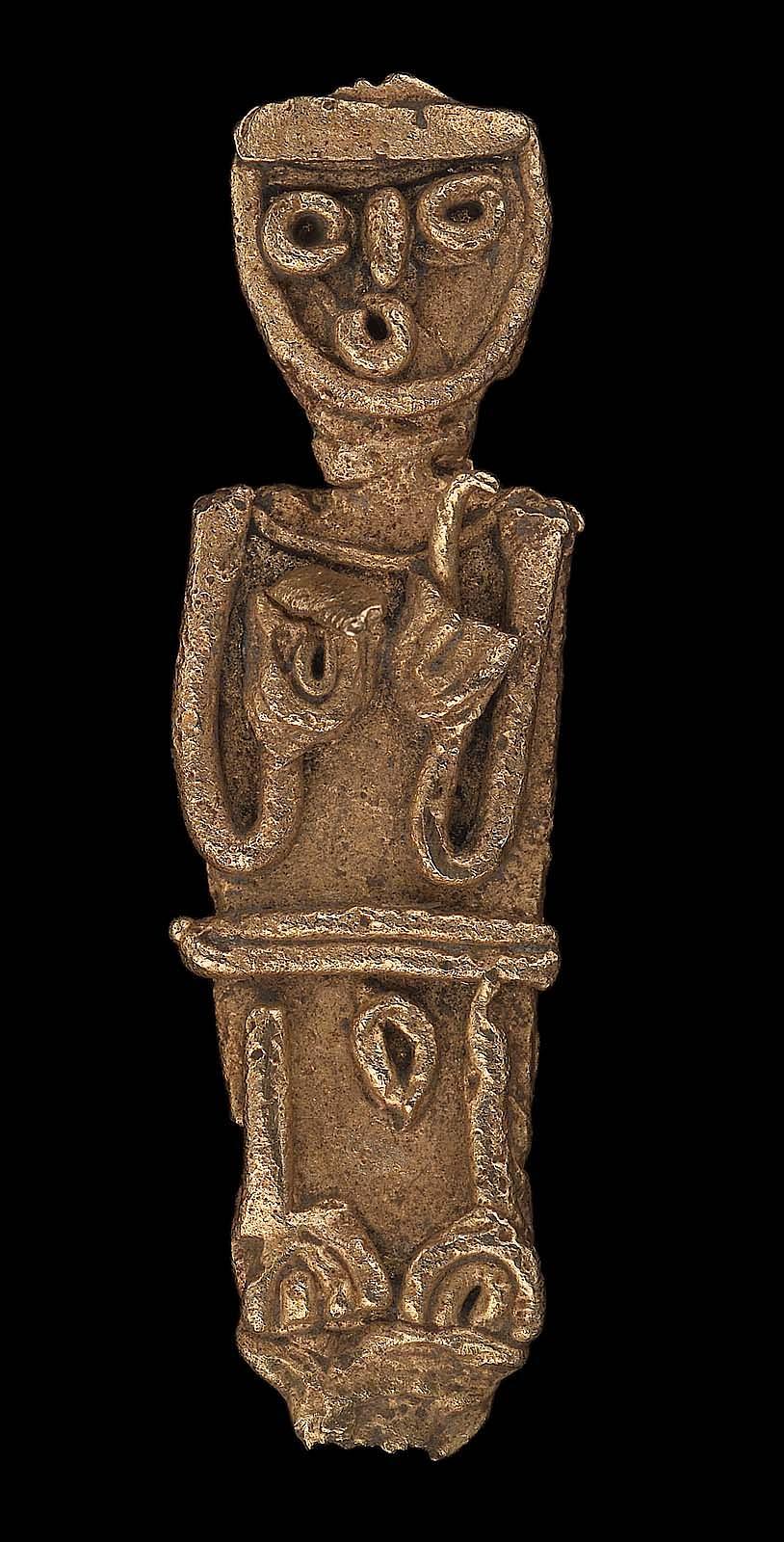

~ Female effigy cache figure.
Culture: Muisca
Date: A.D. 1100–1550
Place of Origin: Departments of Cundinamarca & Boyacá, Colombia
Medium: Gold and copper alloy
#history#museum#archeology#archaeology#12th century#16th century#female#female effigy cache figure#effigy#latin america#latinoamerica#colombia#gold#muisca#a.d. 1100#a.d. 1550
469 notes
·
View notes
Text

Figurine (Tunjo) of a Figure Holding Plants and Cup, Wearing a Crown
Muisca, 1000–1500
99 notes
·
View notes
Photo

Votive figure (Tunjo) in form of a man sitting on a stool, Colombia,
Eastern Cordillera, 800-1600 CE (Muisca tradition),
Tumbaga (gold-copper alloy).
Museum of fine arts, Houston, gift of Alfred C. Glassell, Jr.
#art#design#sculpture#votive#figure#colombia#tumbaga#gold-copper alloy#museum of fine arts#muisca#tunjo#style#history#antiquity#archeology
251 notes
·
View notes
Text
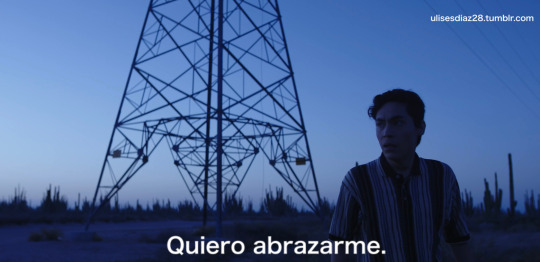
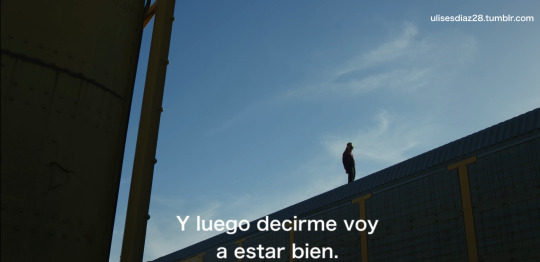

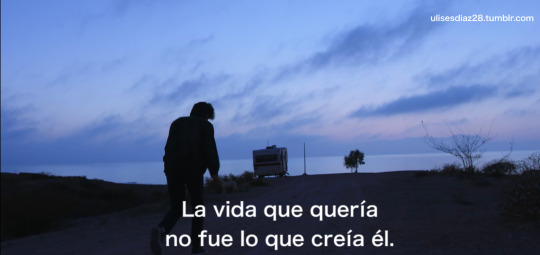
#ed maverick#muelas de gallo#canciones#frases#vida de mierda#depresion#pensamientos#nostaliga#cigarrillos#ron barato#ulisesdiaz28#muisca
85 notes
·
View notes
Text
INDIGENOUS ANDEAN SOUTH AMERICAN RESOURCES
The Anthropological Masterlist is HERE.
The Andean States are a group of South American countries that are connected by the Andes Mountain range. They are located in the north and/or west part of South America.
AVA GUARANÍ ─ “The Ava Guaraní, or Chiriguano, people are an Indigenous South American people. They are native to the foothills of the Andean Mountains.”
─ Ava Guaraní History
AYMARA ─ “The Aymara, or Aimara, people are an Indigenous South American people. They are native to the Altiplano region of South America.”
─ Concept of Time to the Aymara
─ Aymara Dictionary
CARIB ─ “The Carib, or Kalina, people are an Indigenous South American people. They are native to the northern coasts of South America.”
─ Carib Language
─ Carib Dictionary
CHANÉ ─ “The Chané are an Indigenous South American linguistic group that share the Arawakan languages. They are native to the foothills of the Andean Mountains.”
─ Arawakan Languages
INCA ─ “The Inca Empire, or the Inka Empire, was a pre-Columbian South American civilization that lived from the 13th century C.E. to 1572 C.E. They lived in the Andean highlands.”
─ Inca Architecture
─ Inca Religion
─ Pachacuti Inca Yupanqui (in Spanish)
MOCHICA ─ “The Moche, or Mochica, civilization was an Indigenous South American people that lived from 100 C.E. to 700 C.E. They were native to northern Peru.”
─ Moche Culture
─ Sex in Moche Culture
─ The Fall of the Moche
MUISCA ─ “The Muisca, or Chibcha, people are an Indigenous South American people. They are native to Colombia.”
─ Muisca Information
─ Muisca Religion (in Spanish)
─ Muisca Dictionary (in Spanish)
PAEZ ─ “The Paez, or Nasa, people are an Indigenous South American people. They are native to the southwestern highlands of Colombia.”
─ Paez Culture
─ Paez Language (in Spanish)
─ Paez Dictionary
QUECHUA ─ “The Quechua, or Quichua, people are an Indigenous South American linguistic group that share the Quechua languages and culture. They are native to Peru.”
─ Quechua Information
─ Quechua Culture
─ Quechua Language
TIWANAKU ─ “The Tiwanaku Empire was a pre-Columbian South American settlement. They lived in modern-day Bolivia.”
─ Tiwanaku Culture
WAYUU ─ “The Wayuu, or Wahiro, people are an Indigenous South American people. They are native to northern Colombia and northwest Venezuela.”
─ Wayuu Patterns in Mochila Bags
─ Wayuu Dictionary (in Spanish)
YARURO ─ “The Yaruro, or Pumé, people are an Indigenous South American people. They are native to Llanos in Venezuela.”
─ Ecological Culture of the Yaruro (in Spanish)
─ Yaruro Dictionary
183 notes
·
View notes
Text
Isabela Exploring Her Roots

I've been wanting to draw this concept for a long time: Isa painting herself with temporary jagua tattoos with Muisca symbols.
Inspiration:
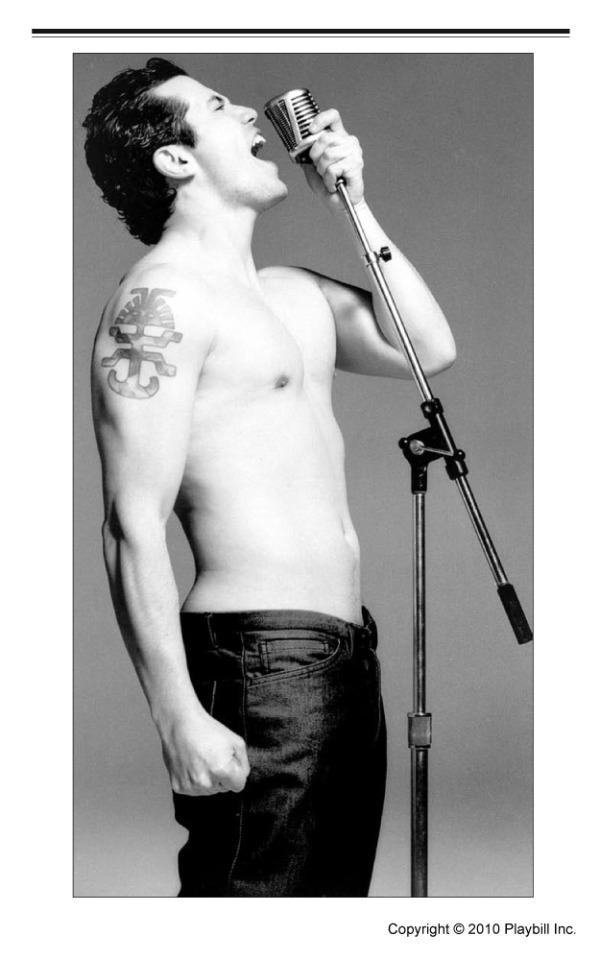
John Leguizamo's tunjo tattoo

A Muisca woman (I cropped the full photo because I don't want this to get flagged)

A Muisca dress
#encanto#isabela madrigal#muisca#tattoos#encantober#encantober 2023#roots#digital art#encanto fanart#medibangpaint#medibang art#medibang paint#fanart#john leguizamo#aeshna's art
16 notes
·
View notes
Text
I’m bad at keeping up with new music and I mainly just listen to the same artist old music over and over again so I decided to challenge myself to listen to as many new music as I can. I mainly just gonna try to keep up with 2024 album releases. If y’all have any artist that you like that will be releasing an album this year feel free to let me know! I’ve already listened to Ariana Grande, Beyoncé, Kali Uchis and The Black Keys albums. And I am ranking too!! At the end of the year I’ll post my top 10 songs too and my ranking of albums all together!
First Album I heard this year was Eternal Sunshine by Ariana Grande! This is my rankings 🔻⬇️🔻
1. True Story
2. We Can’t Be Friends
3. Eternal Sunshine
4. Don’t Wanna Break Up Again
5. I Wish I Hated You
6. Supernatural
7. The Boy Is Mine
8. Imperfect For You
9. Bye
10. Ordinary Things
11. Saturn Returns
12. Intro
13. Yes, and?
9/10 (spoiler alert this is still my highest reviewed album!)
(My fav Ariana Grande album!!)
1-7 i have on repeat!!!
#ariana grande#eternal sunshine#beyonce#cowboy carter#beyonce cowboy carter#ariana grande eternal sunshine#kali uchis#Kali uchis orquídeas#ORQUÍDEAS#the black keys#the black keys Ohio players#ohio players#new music#rankings#music rant#music rankings#pop muisc#muisca#Music#new album#album#full album#album review#best album#music review#music recs#music reccomendations#song ranking#album recommendation#album release
3 notes
·
View notes
Text

3rd Moon goddess, the Muisca : Chía
#traditional art#my art#art#wushu#watercolor#kungfu#aquarelle#artwork#plant#moon goddess#moon phases#muisca
2 notes
·
View notes
Text
youtube
3 notes
·
View notes
Text
4 notes
·
View notes
Text

(*Painting depicting Spaniard and Native American from Peru. From these unions were born mestizos, children of mixed Native and European ancestry.)
Due to an investigation my family is currently conducting to try to establish a Portuguese ancestor (for possible citizenship purposes), we have discovered that we likely descend from Beatriz de Torres y Moyachoque, the daughter of "Catalina" of Moyachoque (her real name having been erased during the Conquista), sister of the Muisca Cacique ("Chief," "Prince," or "Lord") of Tumerqué (in modern day Colombia), and the conquistador, Juan de Torre(s), who was commissioned to oversee the region of Tumerqué by the infamous Conquistador Gonzalo Jiménez de Quesada (the man obsessed with finding El Dorado.) Sadly, we don't have much information about Beatriz other than the fact that she married (or was married to) a former catholic priest, but there is a lot of information about her brother, Diego de Torres y Moyachoque, who became Cacique of Tumerqué upon the death (execution?) of their uncle, the former Cacique, and who went on to denounce the maltreatment of his people to the King of Spain on two occasions. Indeed, Diego de Torres y Moyachoque is considered the most important figure of 16th-century Colombia, and one of the first defenders of (what we would now call) human rights in Latin America.
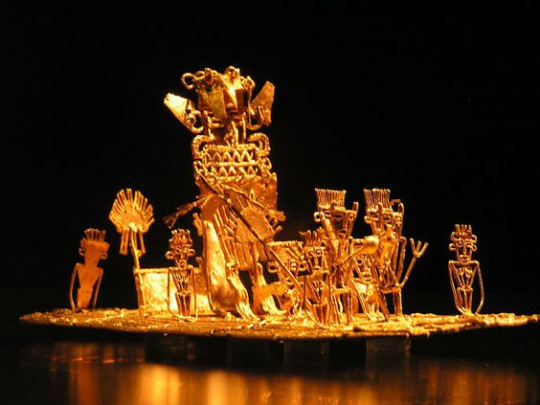
(*Muisca raft, depicting the possible origin of the El Dorado legend; El Dorado being a Cacique covered in gold dust during his coronation, and not a city.)
Juan de Torre(s), Diego and Beatriz's Spanish father, had two other children (also a boy and a girl) by a previous (or still standing) marriage in Spain. When Juan discovered that he was dying, he sent for his Spanish son, Pedro, to whom he gave the inheritance of his position in Tumerqué. This resulted in a very uncomfortable situation where the two half-brothers, Diego and Pedro, one a Mestizo Cacique, and one a Conquistador Overseer, were both concurrently presiding over the region. From what I've read, Pedro who, as it turns out, was a bit of a shit, had his brother declared illegitimate and stripped of his title of Cacique (which makes no sense, because ‘illegitimate’ by spanish standards or not, Muisca titles are passed on the female line, which makes Diego Cacique through his mother). In any case, it seems Diego recovered his title afterwards (because obviously???). There also seems to be some situation where, failing to find and punish Diego for sedition, the Spanish authorities took it out on Pedro, who lost “his” lands (and maybe his life?) as a result? I don’t know, the details seem hazy. In any case, the authorities did eventually catch up with Diego during a trip to Spain. There they accused him of undermining Spanish rule and imprisoned him. By the time they pardoned and released him, several years had gone by. At that point, he was so impoverished he could not afford to go home. Thus the last Cacique of Tumerqué, whose birthright it was to dress in the riches depicted in the image below, died in abject poverty.
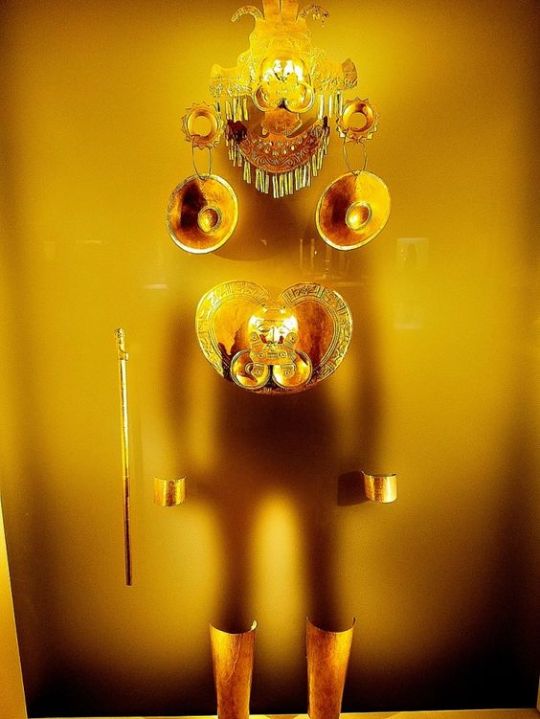
(*Ceremonial Muisca Gold on display in the Museo de Oro in Bogota, Colombia.)
How And Why I Am Able to Trace This Line: The reason I am able to trace my ancestry back this far, to Beatriz, is due to the fact that mestizo women like her, who were daughters of high-ranking conquistadors, were often married to men of similar rank within the Spanish Hierarchy. Given the lack of Spanish women around at the beginning of the Conquista, these women ended up forming a part of the 'elite' class, for which we have extensive documentation (land deeds, marriages, inheritances, postings, governorships etc.) High-ranking Mestizo men, like Beatriz's brother, Diego, would have had a harder time being integrated into the Spanish hierarchy, given that Spaniards would have been less likely to allow their daughters to enter into marriages with them (mestizo men were seen as "corrupting" the line and lowering the status of the women they married, as opposed to Spanish men.) That said, Diego did marry a Spanish woman when he was in Spain entreating the King, and had three children with her.
*It’s worth mentioning that Beatriz and Diego’s position was not the norm. Most mestizos, the children of other Spaniards and Native Americans, were not afforded any of the comforts, privileges or protections that these siblings were able to enjoy.

Note on Beatriz's Mother, "Catalina:" Since inheritance of titles and land in Muisca culture went through the female line (matrilineal), I suppose that the Conquistador Juan de Torre took Catalina, sister of the current Cacique, as his partner because it also placed him, a Spanish man, and their half Spanish children (Diego and Beatriz), in the direct line of succession by Muisca tradition. How better to secure the "legitimacy" of your rule and also diminish the traditional structures of a people than to make cultural "others" of their current and future leaders? The twist of fate was that unlike most high-ranking Mestizo sons, who tried to hide their native ancestry so as to better integrate with the Spanish, Diego embraced his Muisca birthright and took the title of Cacique. By this tradition, however, the title of Cacique would not have passed to Diego's children, but to Beatriz's (to her son but not to her son’s children; rather, to her daughter’s son; then to her daughter’s son’s nephew by a sister, etc.)

Oh and to add insult to injury, before the spanish decided to turn the Andes into the Alps (why???), the area around bogota was covered in purple flowering trees now known as Siete Cueros (”Seven Barks”) or Glory Tree. Can you imagine what that must have looked like? A purple valley? ((Source for this was a botanist at the Jardín Botánico in Bogota))
#personal#moyachoque#ancestry#native american#conquista#muisca#spanish conquista#Mestizo#mestizaje#spanish colonialism#spanish colonization#el dorado#colonialism#imperialism#latin america#chibcha#legend of el dorado
7 notes
·
View notes
Quote
Bachué ("the Grandmother") is a non-material principle of creation, the will, the thought and the imagination of all the things to come. She is a similar concept to the principle of tao in the Chinese mythology.
The time of unquyquie nxie ("the first thought") is the time of the cosmic origin, when the thoughts of Bague (Bachué) became actions. This is the time when Bague created the builders of the universe and ordered them to create.
Muisca mythology and religion : Creation of the universe
#mythology#columbia#muisca#religion#origin#cosmos#cosmic oigin#creation#universe#bachué#bague#idealism#materialism#will#thought#imagination#tao
2 notes
·
View notes
Photo

(EN) Recommended historical books📜
Invasion to the country of the Chibchas (1966)
Author: Juan Friede
A visionary book about the conquest of the center of what we know today as Colombia, created from an in-depth investigation of primary sources from the General Archive of the Indies.
(ES) Libros historicos recomendados📜
Invasión al país de los Chibchas (1966)
Autor: Juan Friede
Una visión novedosa de la conquista del centro de lo que hoy conocemos como Colombia, creada a partir de una profunda investigación de fuentes primarias del Archivo General de Indias.
6 notes
·
View notes
Text
tiktok: jinjihnay
posto coisas baseadas nos meus sentimentos lá :)
"obrigada pelo amor..."
10 notes
·
View notes
Text

La calma después del la tempestad.
Jamás había sentido algo tan impactante e imponente como aquella presencia natural, lo que parecía una simple tormenta, se convirtió en un huracán… En ese atardecer, me rete a caminar hacia la playa para encontrarme con aquel devastador viento, y un mar tan violento, que sus olas me hipnotizaban, despertando en mi la autodestrucción y al mismo tiempo un llamado a unirme con la naturaleza, a la cual, todos queremos regresar siempre a nuestra propia manera. El viento, la lluvia y la arena, golpeaban con fuerza mi cuerpo y me hacían entrecerrar los ojos, sentía que ponía demasía fuerza para no ser derribado, el sonido del mar y viento me hacían ensordecer, mis sentidos estaba desorientados y mi corazón latía con fuerza al igual que mi respiración, por mi cuerpo, la adrenalina se apoderaba de cada rincón, tenía ganas de gritar de la emoción. Me sentía diminuto ante tal espectáculo de violencia, era hermoso y al mismo tiempo me daba mucho miedo, imaginaba que sentiría estar en el corazón de aquel huracán, en centro de la vida y muerte. Cuando regrese a mi refugio, me senté en aquella silla artesanal colgante, sentía tanta calma, pues el huracán ya había pasado, respiraba lentamente, pues aún sentía los estragos de la naturaleza recorrer mi cuerpo, inundaba mis pulmones de humo espeso, mientras mis sentidos se magnificaban más y más, mi mente explotaba en la conexión con mi entorno, mis cuerpo se relajaba y sentía el viento rozar mi cuerpo húmedo por la lluvia, me estremecí y me acomodé en la silla, como si fuera un abrazo cálido de madre, entendí entonces que mis problemas y mis preocupaciones, son realmente pequeños comparados con lo que sucede a mi alrededor, que sin importar lo que pase, siempre habrá una fuerza mucho mayor que yo, me puse los audífonos, cerré los ojos y me fusioné con el entorno, mientras una voz en mi cabeza me decía. -No hay de que preocuparse, de esto se trata la vida, disfruta de los buenos y malos momentos, deja de atormentarte por cosas que ya sucedieron, no vienes aquí a sufrir ni atarte a nadie, experimenta, aprende y disfruta al máximo de lo que sea que hagas, no permitas que nadie te vuelva a usar y lastimar, ahora sabes lo que vales y quien eres- Entonces sonreí mientras sentía como las heridas de mi alma sanaban lentamente, como mi cuerpo se aligeraba y las lagrimas salían de mis ojos cerrados, me sentía en paz y aliviado, entonces me dormir…
2 notes
·
View notes
